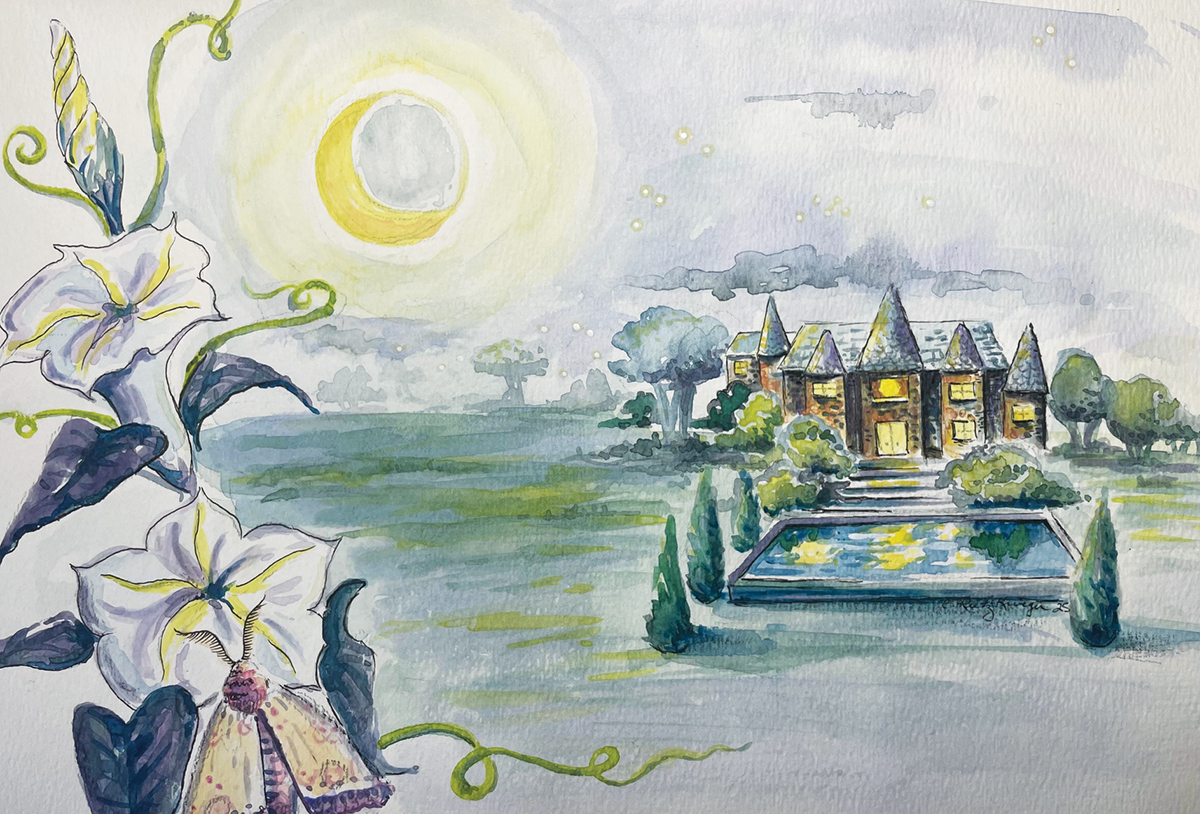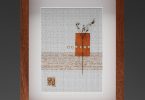
Cristina Reitz-Krueger, artist
By Carol Howard
Now in its centennial year, F. Scott Fitzgerald’s The Great Gatsby (1925) has long been considered the great novel of the Jazz Age. The story centers on the enigmatic Jay Gatsby, one of Long Island’s nouveau riche. His home is an imitation of a French hôtel de ville “with a tower on one side, spanking new under a thin beard of raw ivy, and a marble swimming pool and more than forty acres of lawn and garden.” In contrast to the understated, old-money estates with elegant, well-established landscaping across the bay, Gatsby’s property is ostentatious, and he hosts lavish garden parties at night for an odd assortment of guests who travel by train and car from Manhattan.
To Nick Carraway, the narrator who rents a “small eye-sore” of a cottage next door, these outdoor soirées on the estate at first seem nothing short of magical: “In his blue gardens” (the enchanting hue cast on the grounds at twilight) “men and girls came and went,” he observes, “like moths among the whisperings and the champagne and the stars.” Indeed, the host himself is an illusionist of sorts—”The Great Gatsby” of the book’s title. The glittering socialites who flock to his home find him mysterious, and rumors swirl around him.
By daylight, and in reality, though, Gatsby is a man with a shady past who appears to have made his money in an elaborate bootlegging scheme during Prohibition. He is also petty and obsessive to the point that he sends a gardener over to Nick’s rental property so as to impose order on the untidy lawn adjacent to his own.
Manicured lawns, in fact, are a recurring motif in the novel, and they serve as a stage upon which much of the action takes place. By the Jazz Age, the wetlands and farms of Long Island had begun to give way to expanses of carpet-like turf grass, which were meticulously maintained with the relatively new technologies of gas-powered lawnmowers and sprinkler systems. The suburban paradigm in development during Gatsby’s era was still the province of the wealthy, however, as clipped lawns had no agricultural value and required dedicated maintenance. Only in the 1950s would these technologies become accessible enough to spur the suburban sprawl of middle-class America.
Although set in a New York bedroom community, The Great Gatsby includes a reference to Asheville as a fashionable location for high-profile golf tournaments. Asheville had also provided the exclusive vacation setting for Fitzgerald’s 1920 short story “The Ice Palace.” The author, then, was thinking about western North Carolina’s reputation as a resort destination long before he took up residence at Asheville’s Grove Park Inn during the summers of 1936 and 1937, while his wife, Zelda, received psychiatric treatment at nearby Highland Hospital.
Published to mixed reviews and disappointing sales, this story of post-World War I American opulence and moral bankruptcy only began to resonate with audiences two decades later, after World War II. During his summers in Asheville in the 1930s, Fitzgerald believed the novel was not only a commercial flop but was destined to be forgotten.
Carol Howard is associate provost at Warren Wilson College. For more information about F. Scott Fitzgerald’s connections to Asheville and nearby areas in Western North Carolina, visit LibApps4.uncg.edu/nclitmap/tours.






